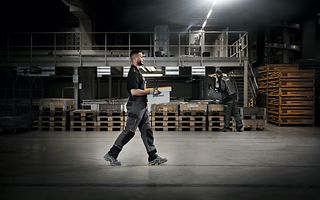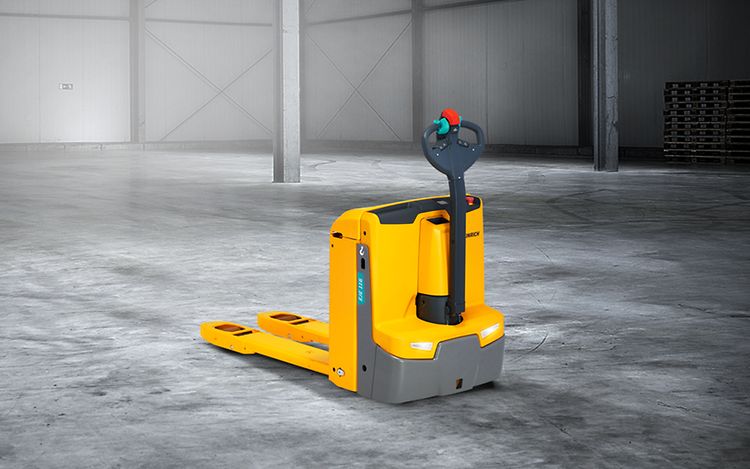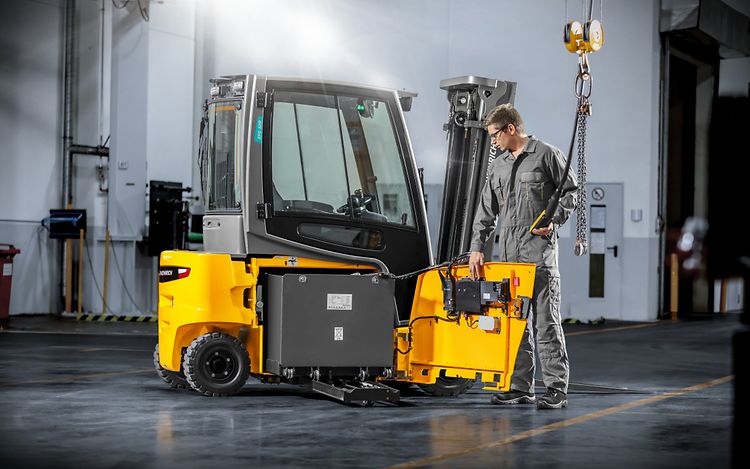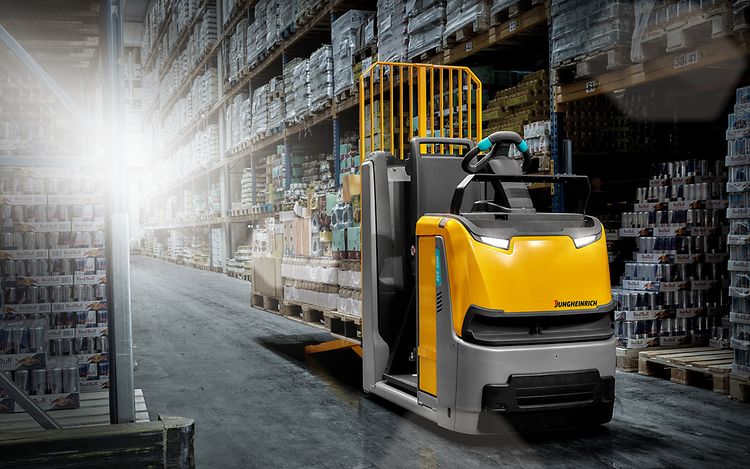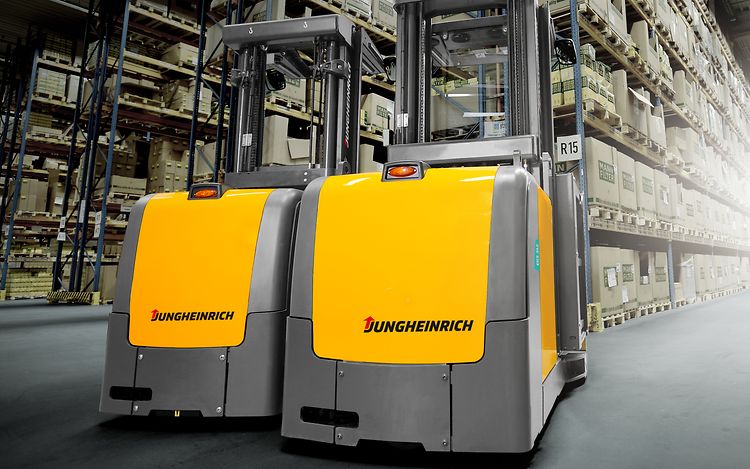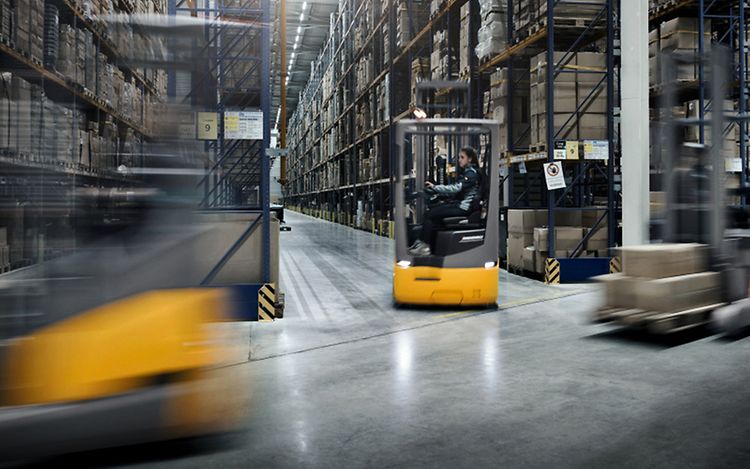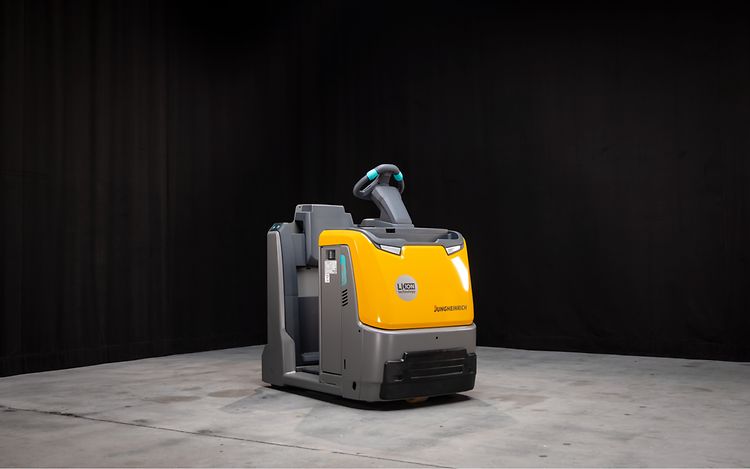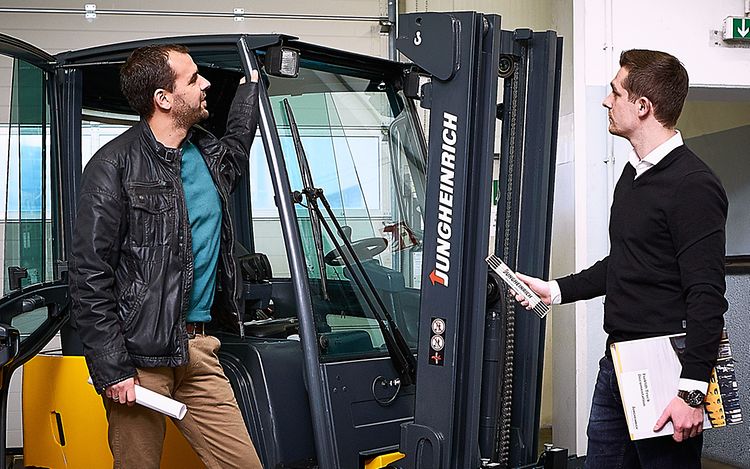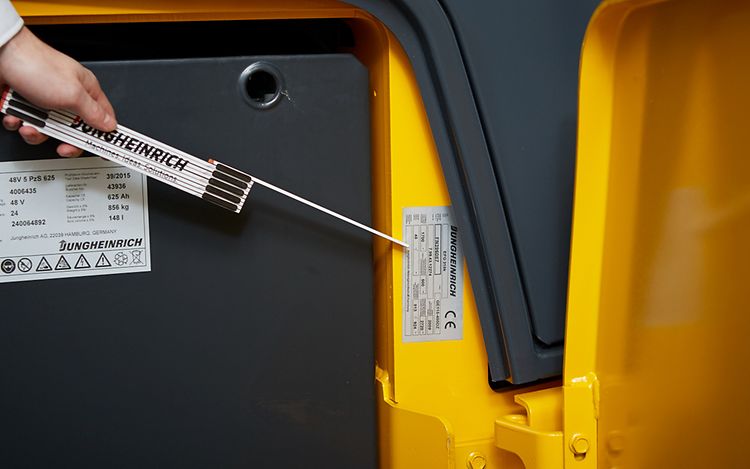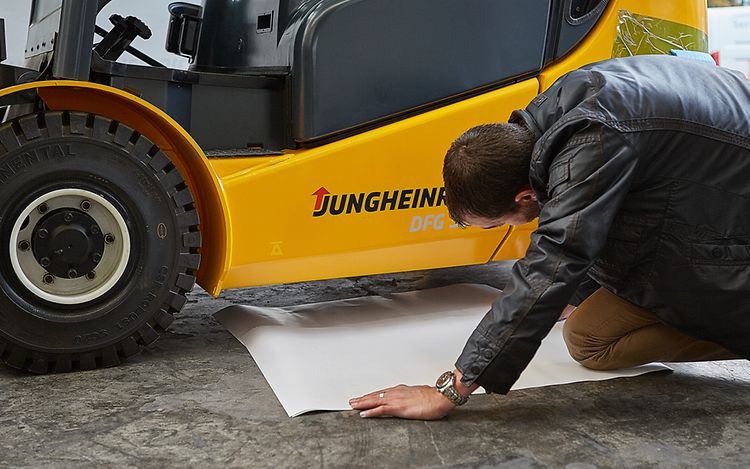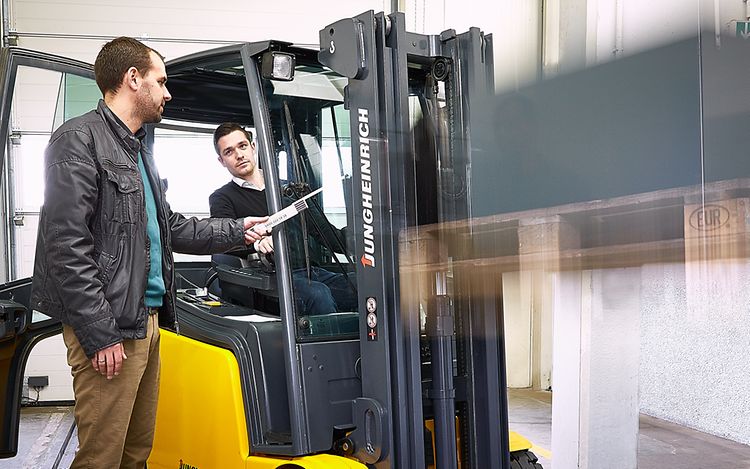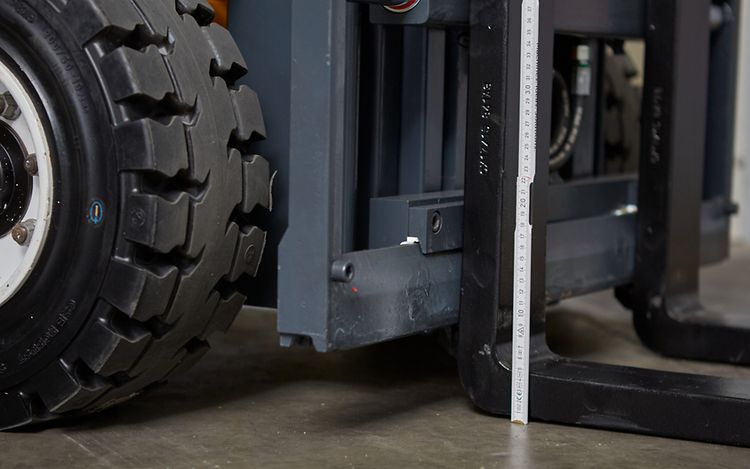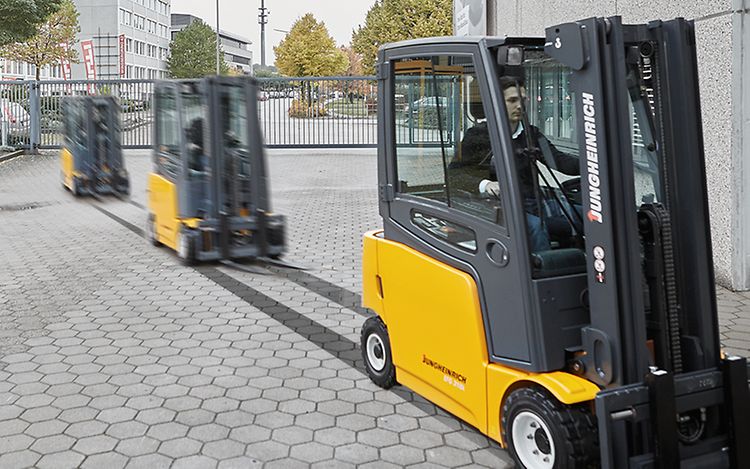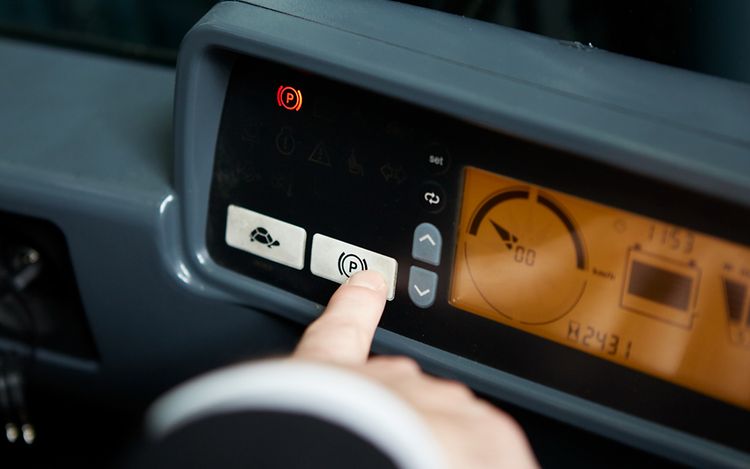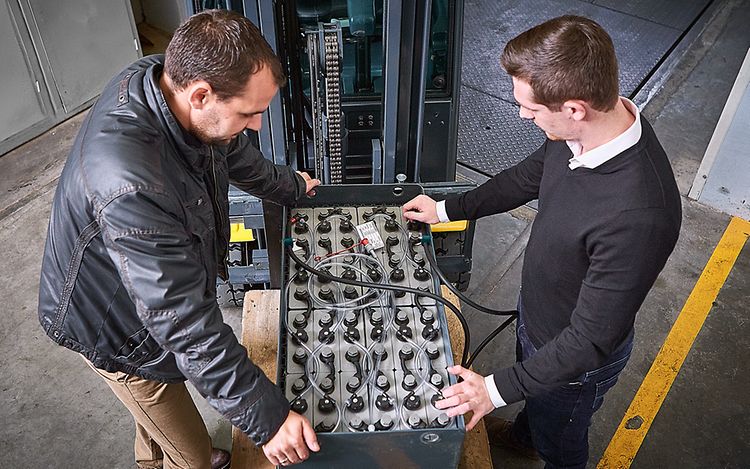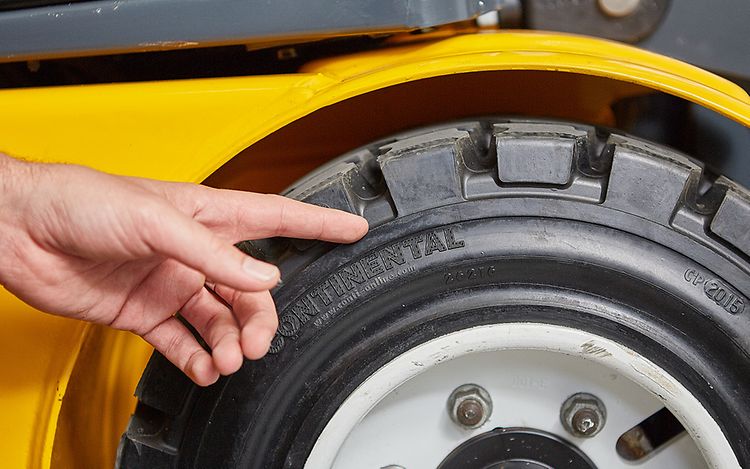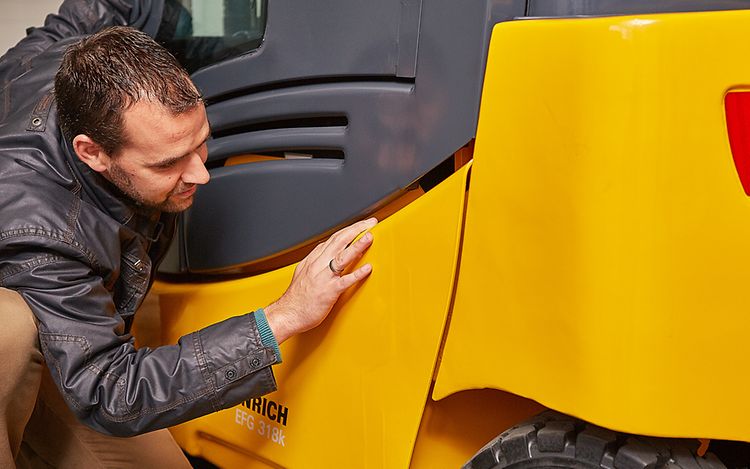Purchasing a used truck requires a lot of attention to detail, even more so than when buying a new vehicle. You cannot know how many kilometers the truck has had to cover, how it was treated by its previous owner or which kinks it might have developed.
Our checklist will help you pick the best preowned vehicle you can get. We provide you with all the criteria it needs to properly inspect the truck of your choice.
Used electric pallet trucks
In our used forklift search you will find used pallet trucks that have been completely refurbished and are therefore technically and optically in top condition.
Learn more
Used pallet stackers
In our used forklift search you will find pallet stackers that have been completely refurbished and are therefore technically and optically in top condition.
Learn more
Used electric forklift trucks
In our used forklift search you will find used forklifts that have been completely refurbished and are therefore technically and optically in top condition.
Learn more
Used low-level order pickers
In our used forklift search you will find used trucks that have been completely refurbished and are therefore technically and optically in top condition.
Learn more
Used reach trucks
In our used forklift search you will find used reach trucks that have been completely refurbished and are therefore technically and optically in top condition.
Learn more
Used tow trucks
In our used forklift search you will find used tow tractors that have been completely refurbished and are therefore technically and optically in top condition.
Learn more
 Functional check by an expert
Functional check by an expert
To begin with you should consider the question if the forklift truck you want is appropriate for your needs. Does it fit into your warehouse or retail space? Beware of clearance heights and aisle width! We recommend: Let an expert check your operational needs.
 Have certain parts been replaced?
Have certain parts been replaced?
Next take a look at the truck’s type plate and the residual load capacity chart. Are they fixed to the correct spot? Do they correspond with the actual lift mast and possible extensions? Some of the parts or even the whole lift mast might have been replaced. The CE certificate is also of great importance. It verifies that the vehicle is tradeable within the European single market.
 Truck manual and service reports?
Truck manual and service reports?
You should ask for the truck’s manual and make sure that all labels and warning notices are available in the relevant language. Does a recent accident prevention regulation report exist, which proves that the truck has been checked according to these regulations?
Also, insist on seeing the service report! Has the vehicle been serviced in regular intervals? Are the operating hours documented correctly?
 Put the engine to the test
Put the engine to the test
Taking a close look at a forklift truck is one thing but it does not forego a test ride. Put the truck to the test and take a ride. If you’re interested in an internal combustion truck, begin with a cold start of the vehicle: Do you notice any increased smoke emission? Move the forklift to a dirt-free spot, leave the engine running for 15 minutes and activate each of the hydraulic functions. Have any leakages formed underneath the vehicle?
 Check the lift mast
Check the lift mast
The lift mast also requires special attention: Check if the guide rail and fork carriage give way. The load must be safe. Does the load cause the lift mast and forks to bend?
 Check the forklift arms
Check the forklift arms
Subsequently, we recommend that you take a careful look at the forks and their fixtures. Can you see any fissures? Are the lockings attached and functioning flawlessly? Measure the thickness of the fork joints. The forks’ width must correspond to at least 90 percent of the fork shank’s.
 Steering
Steering
Check the steering by determining if the vehicle stays safely on track.
 Brakes
Brakes
The brakes must also be intact and feel evenly balanced on both sides. Does the holding brake work?
 Lights
Lights
Test the lights. Are all lights and headlights fully functional? Cables and connections should be flawless, the light fittings may not contain any moisture.
 Battery
Battery
If you are interested in an electric truck, you need to check the condition of the battery. Green and white crystals at the poles might indicate sulphation and convex cells are might be suggestive of advanced age. Both can lead to the failure of the battery. Ask the seller, if the battery has warranty and if it was refurbished. Does an inspection report exist?
 Tires
Tires
Also beware of tire wear. Examine the tires. Are they damaged? Can you see cuts or bursts? Is the so-called wear mark (Tread Wear Indicator, TWI) still clearly visible?
 Vehicle Body
Vehicle Body
Now move on to the vehicle body. Can you detect any rust damage, dents or other deformations? And last but not least: what kind of warranty does the deal include? More precisely, for which features and vehicle parts does it apply? How long for?
 Test drive at the place of operation
Test drive at the place of operation
A test drive around the seller’s yard does not replace the test at the place of operation. At best, the seller will give you the chance to put the vehicle to the test on your own grounds. This enables you to best ascertain the forklift truck’s condition. This way, you can also determine if the truck functions properly and is the right pick for you.
We wish you the best of luck for purchasing the used truck of your choice.
We will be happy to advise you
Make an appointment now!



